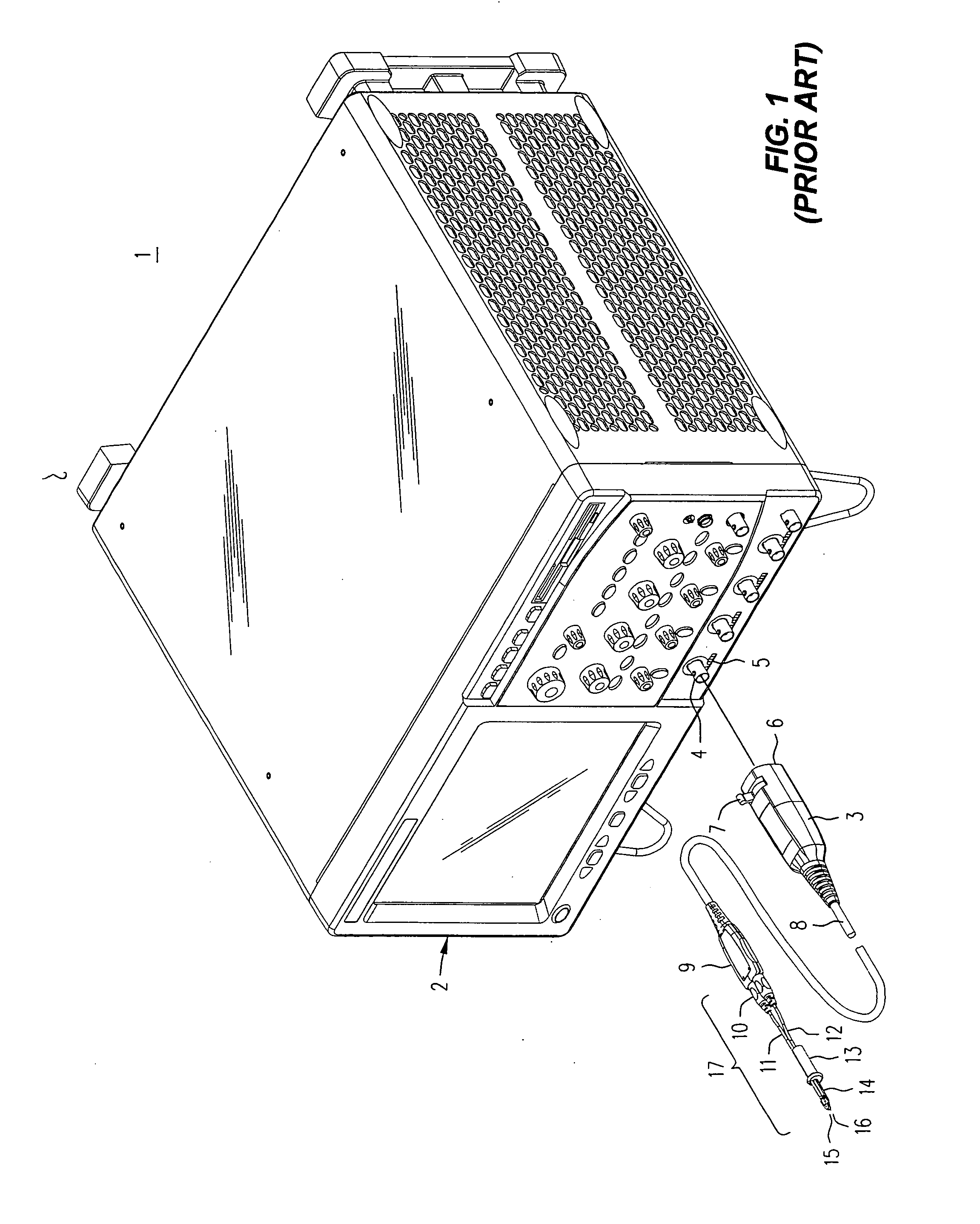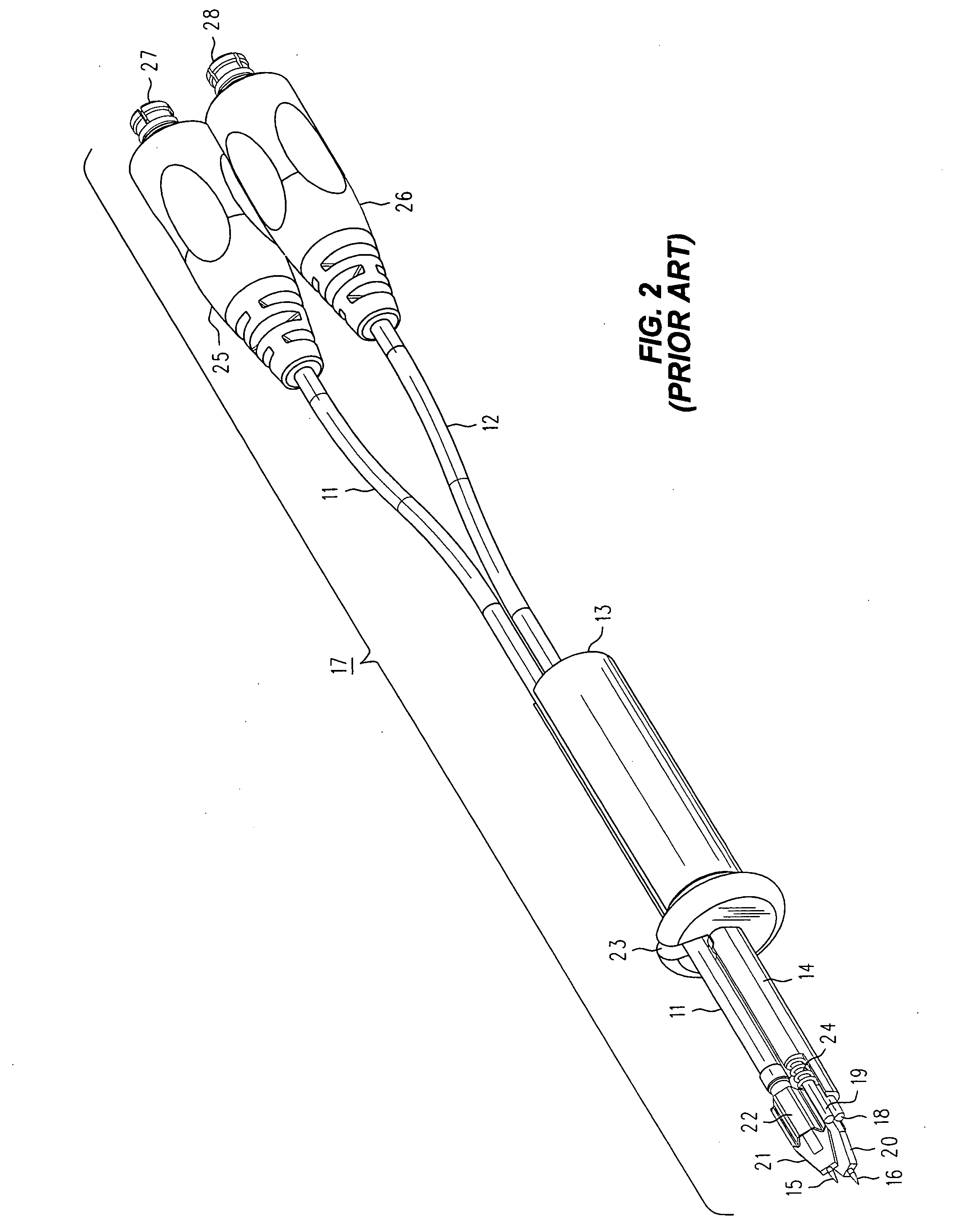High frequency oscilloscope probe with unitized probe tips
a technology of high frequency oscilloscope and probe tip, which is applied in the direction of electrical testing, measurement devices, instruments, etc., can solve the problems of loss of cable, limitations of this approach, and large size of probes, so as to minimize the loop area and reduce the size
- Summary
- Abstract
- Description
- Claims
- Application Information
AI Technical Summary
Benefits of technology
Problems solved by technology
Method used
Image
Examples
Embodiment Construction
[0023] The following is an abridged version of the description of FIGS. 1-3 from the incorporated UNBREAKABLE MICRO-BROWSER. We include it here to set forth the immediate environment into which we shall introduce and describe the invention.
[0024] Refer now to FIG. 1, wherein is shown a front perspective view of an electronic instrument 2, such as a digital oscilloscope, having one or more front panel connectors 4 that each receive a push-lock BNC connector 3, say, in support of operation with active probes. In a manner known in the prior art, the push-lock BNC probe housing is installed simply by lining it up and then pushing it toward the 'scope. When the push-lock connector 3 is in place, not only is a BNC connection established to connector 4, but a row of spring loaded pins 6 (not visible) on the front panel of the housing for the push-lock assembly engages a row 5 of contacts beneath the connector 4. To remove the push-lock connector the operator pushes on lever or tab 7 with ...
PUM
 Login to View More
Login to View More Abstract
Description
Claims
Application Information
 Login to View More
Login to View More - R&D
- Intellectual Property
- Life Sciences
- Materials
- Tech Scout
- Unparalleled Data Quality
- Higher Quality Content
- 60% Fewer Hallucinations
Browse by: Latest US Patents, China's latest patents, Technical Efficacy Thesaurus, Application Domain, Technology Topic, Popular Technical Reports.
© 2025 PatSnap. All rights reserved.Legal|Privacy policy|Modern Slavery Act Transparency Statement|Sitemap|About US| Contact US: help@patsnap.com



